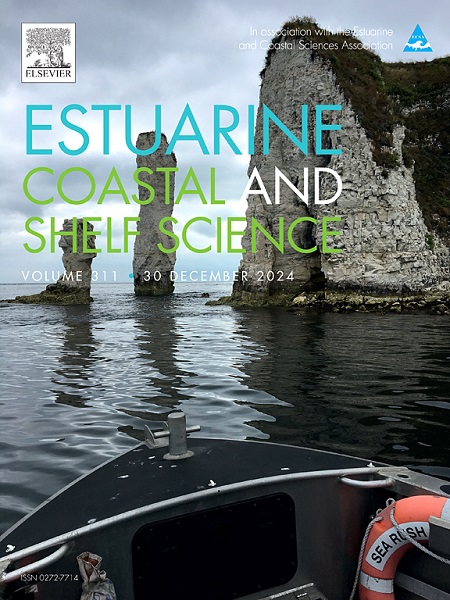Caspian Sea fisheries under threat from marine heatwaves
IF 2.6
3区 地球科学
Q1 MARINE & FRESHWATER BIOLOGY
引用次数: 0
Abstract
Exposure to extreme temperature events represents a critical challenge for landlocked marine ecosystems, which are highly susceptible to the adverse impacts associated with such phenomena. Marine heatwaves (MHWs), defined by periods of exceptionally high sea surface temperature (SST), have become increasingly prevalent and devastating under the influence of global warming, leading to significant degradation of marine biodiversity and ecosystem health. This study introduces the first comprehensive assessment of the occurrence of MHWs from 1982 to 2022 in the Caspian Sea (CS) and their impacts on fish communities. We identified 103 MHW events, including the most extended event lasting 64 days and the most intense event exceeding 4.45 °C above the climatological mean. Our results show a link of MHWs with water vapor (WV), rainfall (RF), river discharge (RD) and sea surface level (SSL). In 2018, the Shannon-Weiner index declined the most (−42.5%), relative condition factor (Kn) in Rutilus kutum (−14.7%), and Acipenser stellatus (−9.7%). The year 2022 witnessed pronounced declines in the catch per unit effort (CPUE) of Clupeonella engrauliformis (−97.3%) and C. grimmi (−97.0%), whereas C. caspia experienced a significant increase (1755.5%). Our findings showed that biological indices and CPUE of fish species change significantly after the warming event, resulting in a reduction in the abundance for the majority of these fish species.
求助全文
约1分钟内获得全文
求助全文
来源期刊
CiteScore
5.60
自引率
7.10%
发文量
374
审稿时长
9 months
期刊介绍:
Estuarine, Coastal and Shelf Science is an international multidisciplinary journal devoted to the analysis of saline water phenomena ranging from the outer edge of the continental shelf to the upper limits of the tidal zone. The journal provides a unique forum, unifying the multidisciplinary approaches to the study of the oceanography of estuaries, coastal zones, and continental shelf seas. It features original research papers, review papers and short communications treating such disciplines as zoology, botany, geology, sedimentology, physical oceanography.

 求助内容:
求助内容: 应助结果提醒方式:
应助结果提醒方式:


